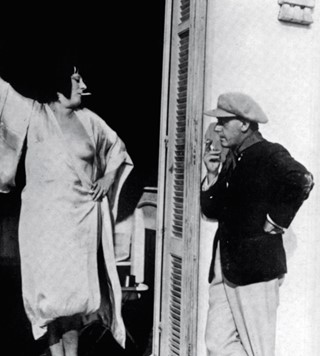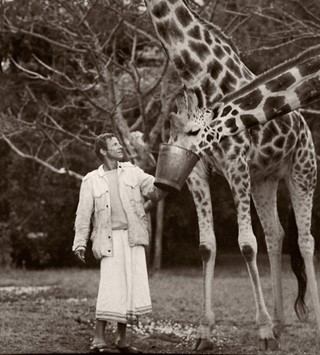As his new show opens in London, the legendary photographer shares his memories of shooting the infamous pop artist – and reveals the one that got away...
When David Bailey arrived on the scene in the early 1960s, he shook the fashion industry to its core. His images were a stark departure from the photography of the day: where models once posed rigid and stiff, Bailey’s images were imbued with energy and dynamism, as he encouraged his subjects to project their personalities in the direction of his unflinching lens. Before long he was offered a job at Vogue, where he shaped fashion photography as we know it and birthed the very notion of the ‘supermodel’ through his work with the iconic Jean Shrimpton.
It goes without saying that the 60s was a crucial period for Bailey, which is why London’s Gagosian gallery chose to celebrate some of his most seminal black and white photographs from the era at its newly opened exhibition The Sixties. Among the selection are portraits of one-time girlfriend Shrimpton, Jane Birkin, Michael Caine and Mick Jagger, as well as contact sheets of former wife Catherine Deneuve and The Rolling Stones.
With each person pictured on a simple white background, the selected portraits that make up the edit are arrestingly intimate – particularly when set against the stark backdrop of the Mayfair gallery. A topless Birken stares out from one image, while Jagger’s face is obscured by the fur trim of his parka, as part of what is perhaps one of Bailey’s best-known works.
According to Bailey, his talent for capturing such enigmatic figures comes from his inherent ability to make his subjects feel at ease on set. “When I’m shooting, there’s actually very little photography happening,” he explains the night before the show opens. “It’s usually a case of a lot of talking and getting to know someone, and about ten percent actually picking up the camera. That just seems like common sense to me.”
Some were more willing than others to let their guard down in front of his lens, though. “Andy Warhol was of course notoriously introverted,” Bailey recalls. “When I was photographing him, it felt like I was going after smoke. It’s right there in front of you, you can see it, but when you reach out to grab it, it disperses and disappears.”
Although he’s made a career of shooting some of the world’s biggest celebrities, it wasn’t an inclination to document the rich, talented, or famous that first compelled Bailey to pick up a camera, however. Growing up in London’s Leytonstone during the Blitz, he saw first-hand the devastating effects the war had on the city, and recalls coming face-to-face with a newspaper cover that alerted him to the power of an image.

The photo in question was a shot of a pilot, who had been gunned from the sky and severely burnt when his plane crashed. “It was on the front page of the Daily Mirror, and it scared the shit out of me,” he remembers. “But my real inspiration came from the movies. I’d always be at the movies putting a shilling in the machine to see whatever film was playing that day.”
With over six decades of work under his belt, and images of everyone from Kate Moss, Jerry Hall, and Helmut Newton, to Jack Nicholson, Cecil Beaton, and Queen Elizabeth among his vast archives, Bailey is keen to push forward in his work instead of reflecting on the past or entertaining any sort of nostalgia. “If it was up to me, I’d have done now. Modern pictures,” he jokes of the Gagosian’s decision to highlight images taken during the 1960s.
That said, though, there is one subject that regrettably got away: “Tina (Brown, former editor of Tatler, Vanity Fair and The New Yorker) and I worked on getting Fidel Castro for about ten years, but never got round to it.” According to Bailey, it meant going out to Cuba and waiting around for six weeks in the hopes of finally meeting him, “but we couldn’t be bothered with that. I think they sent Herb Ritts out in the end. He didn’t get the shot either,” he laughs.
David Bailey: The Sixties is at Gagosian, Davies Street, London until March 30, 2019.















